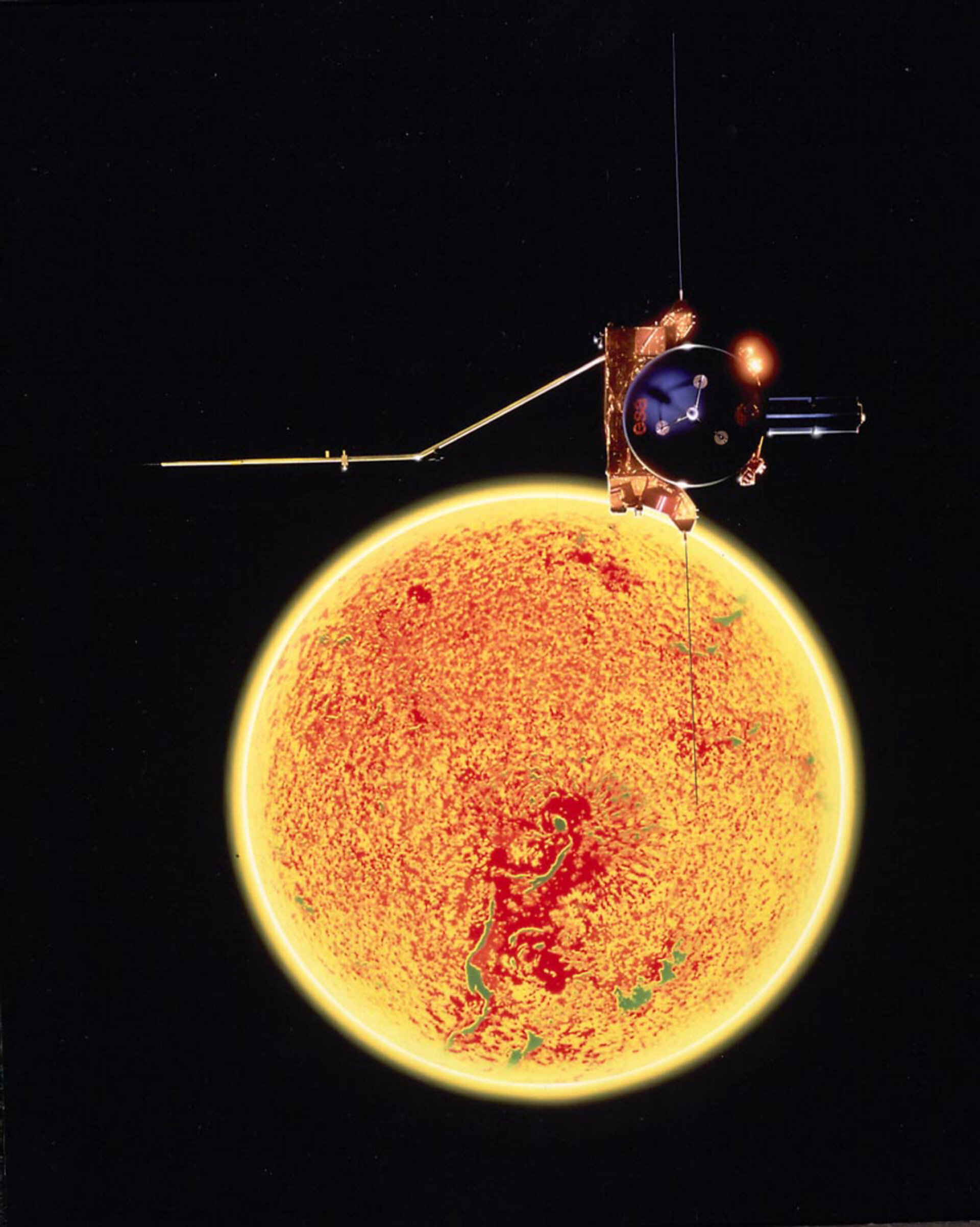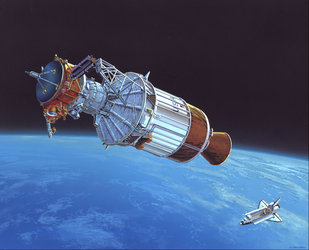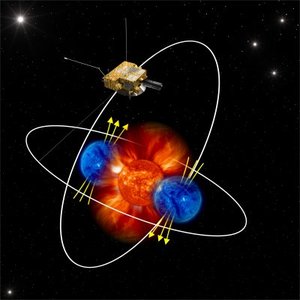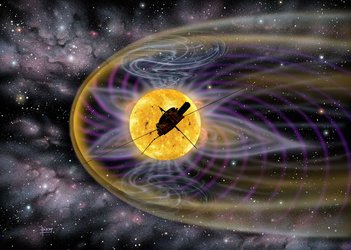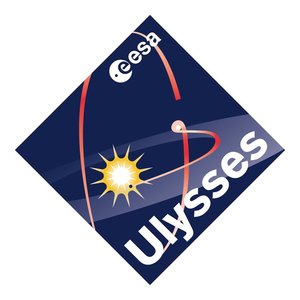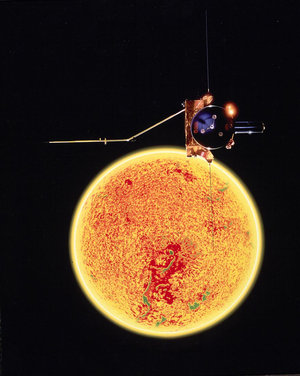Ulysses: looking at the future
With an impressive number of successes already under its belt, what lies ahead for Ulysses?
Its mission has already been extended to March 2008. In February 2007, Ulysses will visit the Sun’s south pole for the third time. Conditions are expected to be similar to those encountered in 1994, when the spacecraft was flying over the south pole for the first time.
This time there will be one major difference, though: even if the Sun will once again be close to a minimum in activity, its magnetic field polarity will be opposite to that during the first polar pass.
New observations will provide a unique opportunity to obtain closure on questions related to the Sun’s magnetism, such as the movement of cosmic rays. These are charged particles travelling through space that are constrained to travel along the galactic and heliospheric magnetic field lines, like on rails.
It is already known that when they get close to the Sun their dynamics is linked to our star’s magnetic cycles. However, the mechanism by which causes the number of cosmic rays reaching Earth to be lower when the solar activity is maximum, is not clear yet.
Scientists will also dig into the puzzling asymmetry in the Sun’s magnetism that was discovered by Ulysses during the first polar passes. Why is one magnetic hemisphere larger than the other? Is it a temporary process? Or is it due to the fact that the solar dynamo, responsible for creating the solar magnetic field, is not exactly at the centre of mass of the Sun?
Powering Ulysses
So, although the spacecraft and its instruments are still in excellent health, Ulysses cannot remain operational indefinitely. This is mainly because a Radioisotope Thermoelectric Generator (RTG), providing the on-board electrical power for the spacecraft, has an output that naturally diminishes with time, by about 4 Watts each year.
Furthermore, since Ulysses spends a significant fraction of each orbit at large distances from the Sun, it requires power-hungry heaters to prevent the on-board hydrazine fuel from freezing (this is needed to keep the high-gain antenna pointing at Earth).
Because of this, a payload power-sharing scheme was introduced in October 2004, with few instruments being temporarily switched off to save power. Full payload operation will be possible again in 2007 when Ulysses comes close enough to the Sun to be warmed by solar heating.
This period covers a major part of the third and fourth polar passes, as well as the rapid transit from southern to northern hemisphere. In early 2008, however, Ulysses will start to head back to the cold, making viable scientific operations increasingly difficult.
For more information:
Richard Marsden, ESA Ulysses Project Scientist
E-mail: richard.marsden @ esa.int
Ulysses findings and science are being discussed in October 2005 at the 54th Ulysses Science Working Team meeting taking place in Pasadena, USA.


